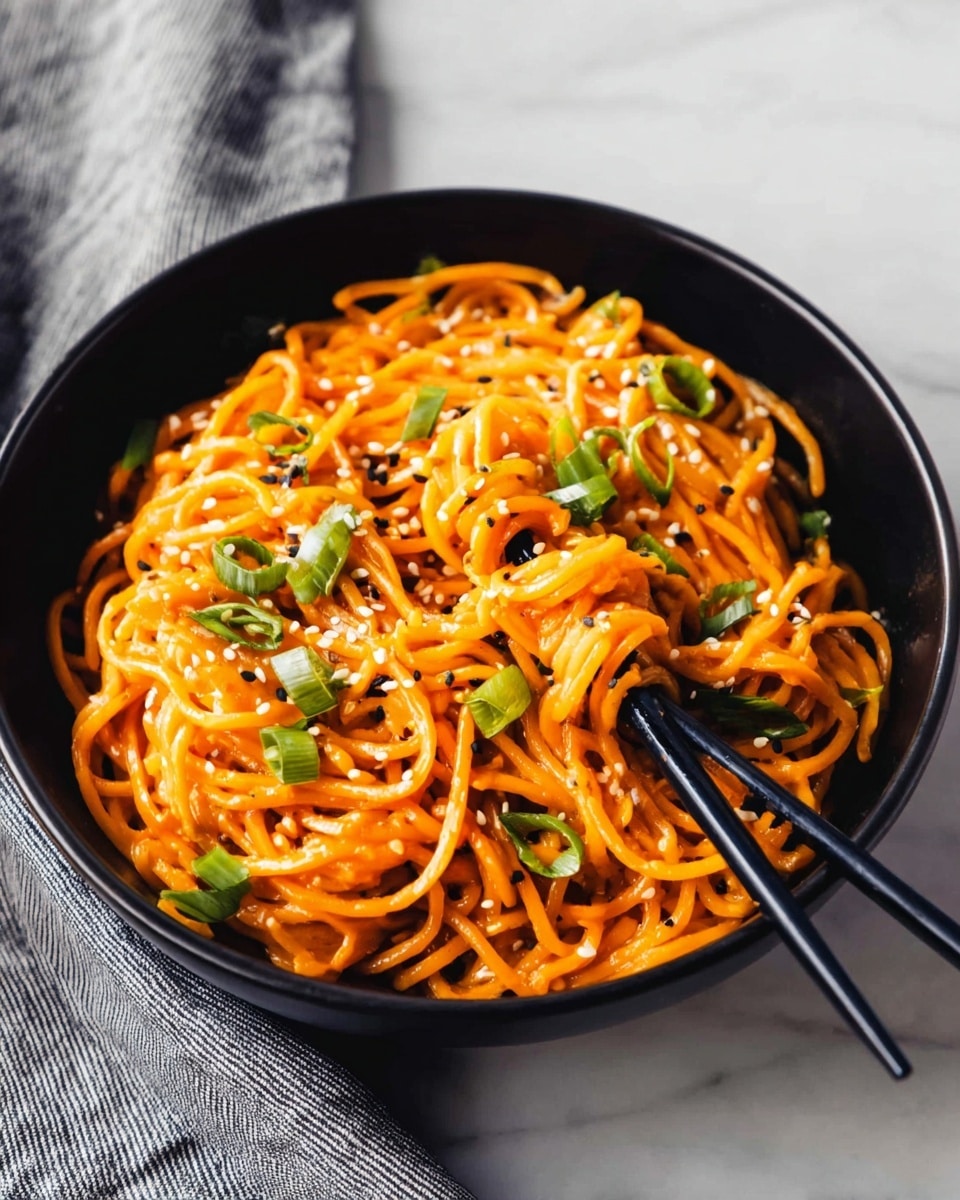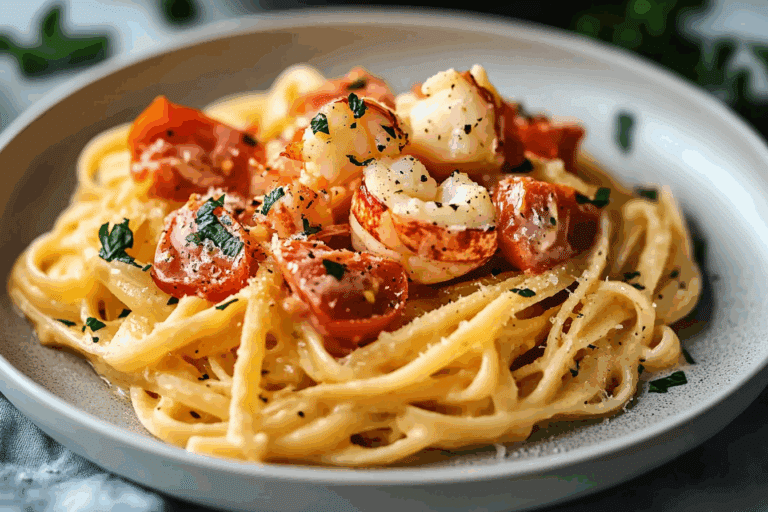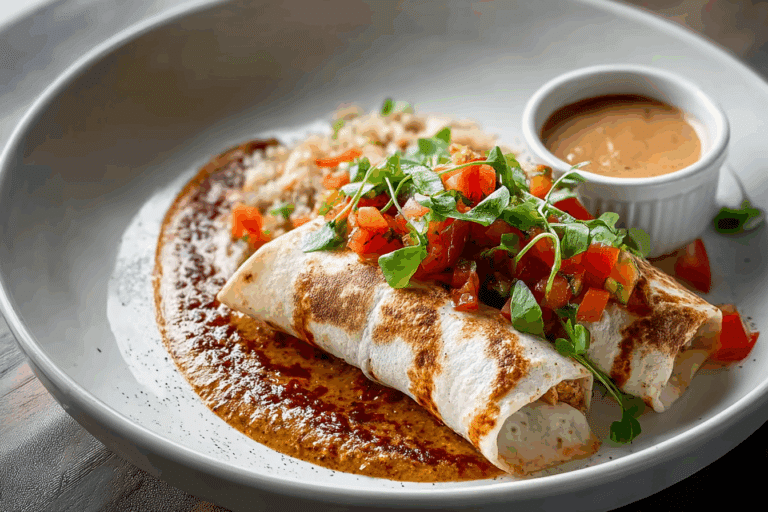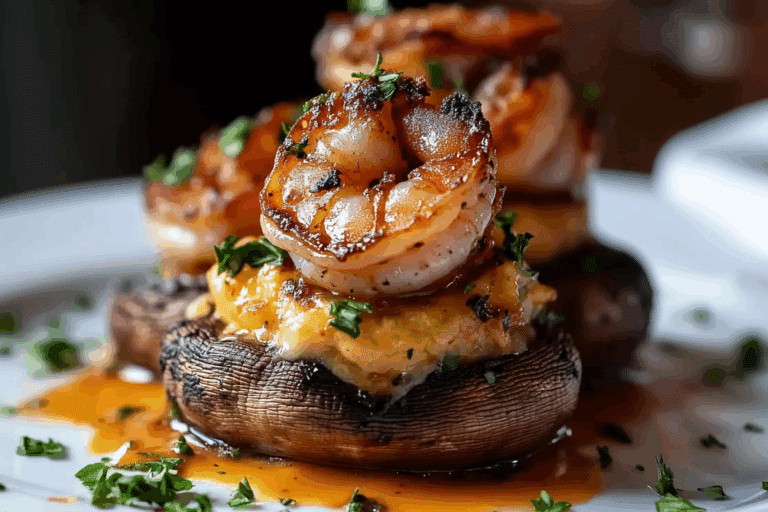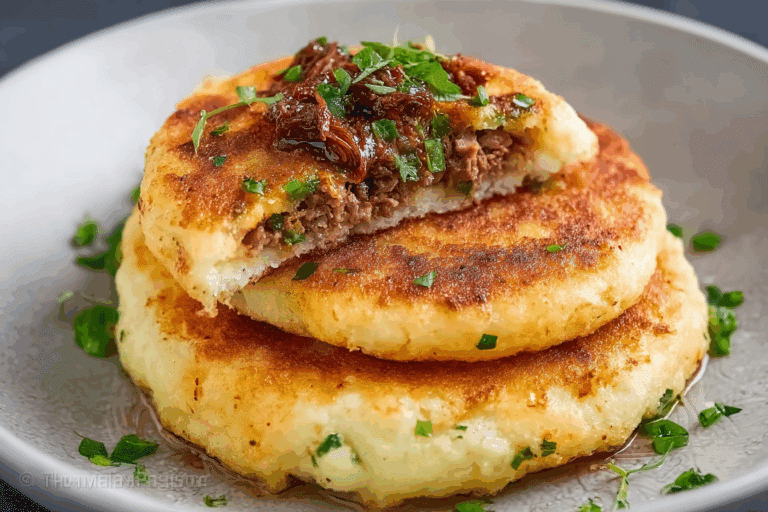Saucy Gochujang Zucchini Noodles Recipe
You know those days when you want something light but still wildly flavorful? This Saucy Gochujang Zucchini Noodles Recipe is exactly that kind of dish. It perfectly balances the fresh crunch of spiralized zucchini with a rich, spicy-sweet Korean gochujang sauce that wakes up your taste buds in the best way. I’ve made this on quick weeknights and even when I needed something classy for guests—it always hits the spot without feeling heavy.
What makes this recipe really shine is how easy it is to customize and how it comes together quickly. Plus, pairing the zucchini with rice noodles gives you a satisfying bite and texture combo that makes it feel like a full meal. Whenever I need a break from the usual pasta or stir-fry, I reach for this Saucy Gochujang Zucchini Noodles Recipe, and trust me, you’ll feel the same once you try it.
Ingredients You’ll Need
These ingredients come together beautifully to create a sauce that’s tangy, spicy, and just a little sweet, which complements the freshness of the zucchini noodles perfectly. When shopping, look for fresh, firm zucchinis and good-quality gochujang to get that authentic flavor.
- Zucchini: Choose firm zucchinis—not too soft—to ensure crisp noodles that don’t turn mushy after cooking.
- Kosher salt: Helps draw out moisture from the zucchini, so your noodles stay pleasantly crunchy.
- Gochujang: This Korean chili paste packs the signature spicy and savory punch; adjust amounts to control heat.
- Hoisin sauce: Adds a touch of sweetness and depth to balance the spice in the sauce.
- Fresh lime juice: Brings brightness that lifts all the flavors in the dish.
- Olive oil: Provides a smooth base for the sauce and helps coat the noodles evenly.
- Fresh garlic: Minced for that fragrant, punchy kick—it’s a game-changer here.
- Rice noodles: These soften quickly and soak up the sauce beautifully without overpowering the zucchini.
- Cornstarch: Thicken the sauce slightly so it clings just right to the noodles.
- Unsalted butter (or vegan butter): Adds richness and a silky finish to the sauce.
- Toasted sesame oil: Last-minute drizzle for that quintessential nutty aroma.
- Sliced scallions and sesame seeds: Optional toppings that add crunch and fresh onion flavor.
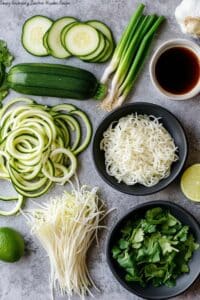
Variations
I love mixing things up depending on what I have on hand or my mood. Feel free to personalize this Saucy Gochujang Zucchini Noodles Recipe to make it your own kitchen favorite.
- Add protein: Sometimes I toss in grilled chicken, tofu, or shrimp to make it heartier—perfect for a lunch that needs to keep you full for hours.
- Spice level adjustment: If you’re sensitive to heat, start with less gochujang and add more as you go. I like my food with a good kick, but you have to do you.
- Use other veggies: Try spiralized carrots or cucumber alongside zucchini for extra crunch and color.
- Make it vegan: Just swap the butter for vegan butter, and you’re all set!
How to Make Saucy Gochujang Zucchini Noodles Recipe
Step 1: Prep Your Zucchini Noodles
Start by spiralizing your zucchinis if you’re using fresh ones—this is where the magic begins. Sprinkle them with kosher salt and let them sit in a colander for about 10-15 minutes. This pulls out excess moisture so the noodles don’t get soggy when cooked. Then, gently squeeze the noodles with your hands or a clean kitchen towel to remove any remaining water.
Step 2: Cook Your Rice Noodles
While the zucchini drains, cook your rice noodles according to the package instructions—usually soaking or briefly boiling—then drain and rinse with cold water to stop the cooking process. This keeps them from sticking together, which can be a little annoying otherwise.
Step 3: Whip Up the Sauce
In a small bowl, combine gochujang, hoisin sauce, lime juice, olive oil, and minced garlic. Then sprinkle in the cornstarch and mix well until it’s smooth and homogenous. This blend brings together the spicy, tangy, and sweet notes you’re aiming for with this recipe.
Step 4: Sauté and Combine
Melt the unsalted butter in a large skillet over medium heat, then pour in your sauce mixture, stirring until it thickens slightly—about 2-3 minutes. Toss in the drained rice noodles and zucchini noodles, stirring gently to coat them evenly without breaking the delicate strips. Finish by drizzling the toasted sesame oil on top and giving it one last toss.
How to Serve Saucy Gochujang Zucchini Noodles Recipe

Garnishes
I love sprinkling sliced scallions and toasted sesame seeds on top—these simple touches add a pop of color and that irresistible nutty crunch. Depending on my mood, I sometimes sprinkle crushed peanuts or even a squeeze of extra lime juice for brightness. They really elevate the experience.
Side Dishes
For sides, I often keep it light with a simple cucumber salad or steamed edamame. If I want something heartier, Korean-style kimchi or pickled radishes pair wonderfully, adding a fermented tang that contrasts nicely with the rich gochujang sauce.
Creative Ways to Present
Once, I served these noodles in individual bamboo bowls and sprinkled edible flowers on top for a dinner party—it was a showstopper! You can also twirl the noodles onto long forks or chopsticks and arrange them in neat nests on plates with a bright drizzle of the sauce around the edges. Presentation is half the fun!
Make Ahead and Storage
Storing Leftovers
I usually store leftovers in an airtight container in the fridge for up to 2 days. Just make sure to drain any excess liquid before packing it up to keep the zucchini noodles from getting too soggy. It reheats nicely without losing too much of that fresh texture.
Freezing
I don’t recommend freezing this recipe because zucchini noodles tend to get watery and mushy after thawing. If you want to freeze, go for the rice noodles and sauce separately, and make fresh zucchini noodles when you’re ready to eat.
Reheating
When reheating, I gently warm the noodles in a skillet over low heat just until heated through. This avoids making the zucchini noodles limp and keeps the sauce creamy without needing extra oil or butter.
FAQs
-
Can I use regular pasta instead of rice noodles in this Saucy Gochujang Zucchini Noodles Recipe?
Absolutely! Regular pasta like spaghetti or linguine can work, especially if you prefer a heartier texture. Just cook the pasta according to package instructions and toss with the sauce and zucchini noodles as directed. Just remember rice noodles provide a lighter, more authentic Korean-inspired texture.
-
How spicy is this Saucy Gochujang Zucchini Noodles Recipe?
The spiciness mainly comes from the gochujang, which has a moderate heat level—enough to give the dish a warm kick but not overpowering. If you’re new to spicy food, start with half the amount of gochujang and adjust to taste as you cook.
-
Can I prepare the zucchini noodles in advance?
You can spiralize the zucchinis a day ahead and store them loosely covered in the fridge. Just salt and squeeze out the moisture right before cooking to keep the noodles crisp and fresh.
-
What can I substitute for gochujang if I can’t find it?
If gochujang is hard to come by, a mix of miso paste, chili powder, and a touch of honey or maple syrup can serve as a makeshift substitute. It won’t be exactly the same, but it’ll give you a similar sweet, spicy, and savory flavor profile.
Final Thoughts
This Saucy Gochujang Zucchini Noodles Recipe has become one of my go-to dishes whenever I want something fresh, flavorful, and fuss-free. It’s a vibrant bowl of goodness that doesn’t skimp on taste and is surprisingly easy to throw together even when life gets hectic. I can’t recommend it enough—give it a try, and I’m pretty sure it’ll find a regular spot in your recipe rotation, just like it did in mine.
Print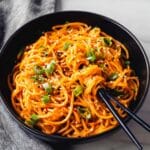
Saucy Gochujang Zucchini Noodles Recipe
- Prep Time: 15 minutes
- Cook Time: 10 minutes
- Total Time: 25 minutes
- Yield: 4 servings 1x
- Category: Main Dish
- Method: Stovetop
- Cuisine: Korean
- Diet: Vegetarian
Description
These Saucy Gochujang Noodles are a flavorful and easy Korean-inspired dish featuring spiralized zucchini and a rich, spicy-sweet sauce made with gochujang, hoisin sauce, and fresh lime juice. The noodles are tossed in a luscious mixture of sesame oil, butter, and garlic for a comforting yet healthy meal that comes together quickly on the stovetop.
Ingredients
Zucchini Noodles
- 3 large zucchini, spiralized
- 1 teaspoon kosher salt
Sauce
- ¼ cup gochujang
- 3 tablespoons hoisin sauce
- 3 tablespoons fresh lime juice
- 3 tablespoons olive oil
- 1 teaspoon minced fresh garlic
- 1 tablespoon cornstarch
Other
- 8 ounces rice noodles, cooked according to package directions; drained
- 2 tablespoons unsalted butter (vegan butter if needed)
- 1 tablespoon toasted sesame oil
- Sliced scallions and sesame seeds for serving (optional)
Instructions
- Prepare the zucchini noodles: Spiralize the zucchini into noodles and place them in a colander. Sprinkle with 1 teaspoon kosher salt and toss to combine. Set aside for 10 minutes to draw out excess water, then gently squeeze the zucchini to remove moisture.
- Cook the rice noodles: Boil the rice noodles according to the package instructions, then drain thoroughly and set aside.
- Make the sauce: In a bowl, whisk together the gochujang, hoisin sauce, fresh lime juice, olive oil, minced garlic, and cornstarch until smooth and well combined.
- Sauté the noodles: Heat a large skillet over medium heat and melt the unsalted butter along with the toasted sesame oil. Add the drained rice noodles and zucchini noodles to the skillet, tossing gently to combine and warm through.
- Add the sauce: Pour the gochujang mixture over the noodles in the skillet. Continue to toss gently and cook for 2-3 minutes until the sauce thickens slightly and coats the noodles evenly.
- Serve: Transfer the saucy gochujang noodles to serving bowls. Garnish with sliced scallions and sesame seeds, if desired, and serve immediately.
Notes
- Spiralizing the zucchini and salting it helps to remove excess water, ensuring the noodles aren’t soggy.
- You can substitute vegan butter to keep this recipe vegan-friendly.
- Adjust the amount of gochujang to your spice preference.
- Toast your own sesame seeds for enhanced flavor if desired.
- Rice noodles should be drained very well to prevent the dish from becoming watery.
Keywords: gochujang noodles, Korean noodles, zucchini noodles, spicy Korean sauce, easy Korean recipe, vegetarian noodle dish, rice noodles

